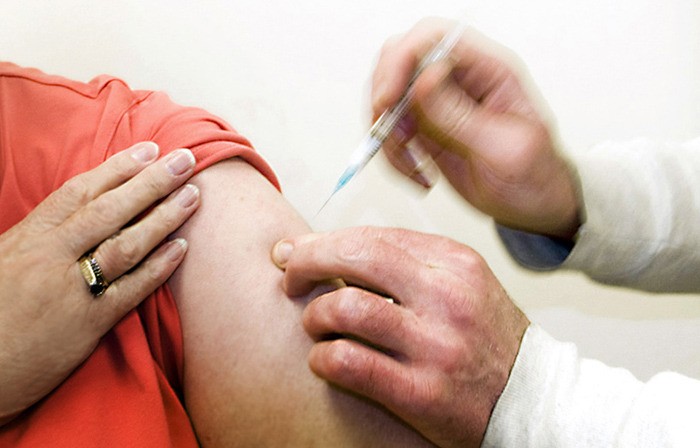It wasn’t as many as in the global H1N1 pandemic of 2009, but this year’s influenza vaccine program delivered a record 1.4 million seasonal doses to B.C. residents.
Resurgence of the H1N1 strain that triggered hospitalizations and deaths among younger patients motivated a late-season surge in demand for flu shots after Christmas, resulting in temporary shortages of vaccine in some areas.
Changes in policy also contributed to better protection agains seasonal flu, said Provincial Health Officer Dr. Perry Kendall. Health care workers and visitors were required to get the vaccine or wear masks in patient care areas, to protect patients with underlying conditions that make influenza more serious.
After the health care worker immunization rate had drifted as low as 50 per cent, the new policy prompted 80 per cent of health care employees to be vaccinated and the remainder used masks, Kendall said Wednesday. One health care aide in Grand Forks was fired after repeatedly refusing to wear a mask when working around patients.
Health care unions argued against the policy but it was upheld in arbitration.
Health Minister Terry Lake said the total was increased by extending free flu shots to anyone who was considering visiting a relative in a health care facility during the winter. Previously seniors, children aged six months to five years, seniors over 65, residents of care and assisted living facilities, those with chronic conditions and health care and emergency workers were eligible for a free vaccine.
Lake said the ministry is considering offering the vaccine free to everyone in future years.
Kendall said the impact of H1N1 on younger people has been analyzed.
“The group over the age of 65 had the highest levels of residual immunity, perhaps from previous infection or previous vaccination, and the group who had the least immunity was 25- to 60-year-olds,” Kendall said. “So that was why we saw the shift of hospitalizations in a younger than expected age group.”
The World Health Organization tracks influenza strains around the world and estimates the strains for the coming year. The vaccine being produced for next winter includes H1N1 and common seasonal flus H3N2 and influenza B.
Kendall said research is proceeding for a universal vaccine, to eliminate the guesswork in crafting the annual strain. That could be available in five years.
